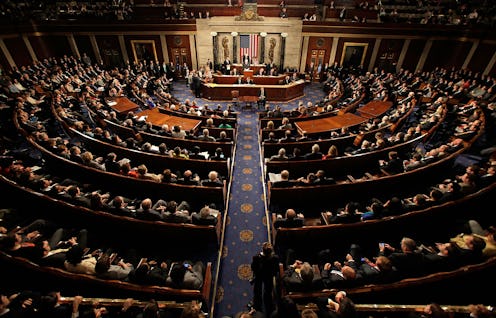With Dec. 19, the date of the Electoral College vote, rapidly approaching, many people are paying especially close attention to the details of the voting process due to the highly controversial nature of this election. During most election years, the Electoral College vote often passes without much fanfare, as many Americans typically view it as merely a ceremonial vote-certifying exercise. However, in light of 2016's unprecedented election, it's prudent to take a closer look at the schedule for the Electoral College in order to better understand the voting process and possible areas of contention.
A total of 538 electors are due to meet on Dec. 19; electors will meet in their own state capitals, and electors from Washington, D.C. will meet in the District. This means there will be 51 meetings of electors occurring on Dec. 19. While the exact schedule for each of these meetings differs from state-to-state, they all generally follow the same procedure.
First, rolls of electors are usually taken to verify attendance. Then, a chairperson and secretary for the meeting are often decided upon from the group of electors present. After these formalities take place, voting typically occurs. Electors vote for president and vice president on separate ballots. These votes are then recorded on a document called a certificate of vote, which each elector signs. Multiple original copies of the certificate of vote are also signed by the electors; they are then sealed along with a certificate of ascertainment. The latter document lists the names of the electors and the number of votes they received in the general election (this corresponds with the number of votes their pledged candidate received).
The sealed certificates of vote and certificates of ascertainment are sent to several federal officials, including the president of the Senate, who will convene a joint session of Congress on Jan. 6, 2017 to count the votes recorded on the certificate of votes from all 50 states plus the District.
During this election, the biggest area of contention in the Electoral College voting process consists of whether or not electors will remain faithful to their pledged candidate (i.e. the one listed on the certificate of ascertainment) when casting their votes at the Dec. 19 meeting. Some anti-Trump Republicans and Democrats hope that electors become "faithless" and refuse to vote for Trump, nominating someone else instead. If at least 37 electors pledge to Trump become faithless, he will not gain an Electoral College vote majority, and the presidential election will then be decided by the House of Representatives.
While having 37 faithless electors is highly unlikely both due to historical precedent and the fact that many states have made it illegal for an elector to not vote for a pledged candidate, it is still not absolutely outside of the realm of possibility. And, since this election is somewhat unprecedented, it is certainly possible that the Electoral College could behave in an unprecedented way as well.
That being said, if the unlikely were to happen and Trump did not receive an Electoral College majority, the Election would then be decided by the House of Representatives. And since it has a Republican majority, Trump would likely win the presidency anyway. If this were to happen, it is possible that a whole new round of Electoral College procedure protests would arise; however, for now the country will await the outcome of the Dec. 19 votes.
